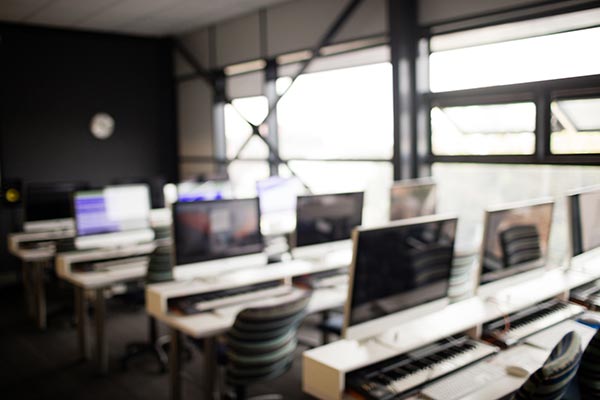We live in a world where technology is rapidly growing. We have witnessed incredible feats of technological advancements that we could only imagine a decade before – and the healthcare system is no stranger to these rapid growths. Hence, with these advancements, Medical Coding has been growing at an extremely high rate as well. So What is Medical Coding, and How can we take advantage of this very high potential career?
A Brief History
The medical Coding system dates way back to the 17th century in England. John Graunt’s work on the London Bills of Mortality gave birth to what we now refer to as the International Classification of Diseases (ICD), which we will talk about later. The works of John Gaunt were enriched by the Sauvages, led by Sir George Knibbs, an eminent Australian Statistician, and they were the first to classify diseases systematically. These compilations were primarily to track the mortality rates caused by each particular disease. Throughout the years of its development, the World Health Organization (WHO) has used this list to track the said diseases and its development.
As this list turned out to become the famous International Classification of Diseases (ICD) through the years of its development, it was then adopted by the global community in 1977. The ICD system then extended its reach to include cause of death and clinical diagnoses. With the new additions in the ICD, a new way of recording and filing medical records was born.
What is Medical Coding?
So what is medical coding today? And why is it a trending career? To answer this question, let’s compare the medical practice today from 10 or 20 years from now. If some of us are old enough to remember, it’s safe to say that the difference is black and white. We’ve had so many advancements today with the processes, instruments, and even the diseases that have mutated into becoming a new breed of viruses and bacteria as well. To keep track of all these things, we need a system that’s already been tracking the diseases before and upgrade it to fit the pieces of information we need today.
According to the American Academy of Professional Coders (AAPC), “Medical coding is the transformation of healthcare diagnosis, procedures, medical services, and equipment into universal medical alphanumeric codes.” In other words, it’s just summarizing medical information into codes consisting of letters and numbers. It is a trending career with very high demand because, as of the moment, we are transitioning to a new era of technology where everything is in the form of digital data – where the goal is the convenience in providing a faster and more efficient quality of care to our patients.
To put it in perspective, it is simply transforming the data in the patients’ files into codes so that the insurance company can process the bill accurately and rapidly. So if there’s a diagnosis, a laboratory order, and a procedure done, there’s a specific set of code for that set of actions. When the insurance company reads it, they would know what that particular patient has been through. Hence, they would not need to read through the lengthy patient case file to determine what happened. There’s a designated code for that in every set of diagnoses, diagnostic and laboratory tests, procedures, etc.
Where do you Find Them?
Medical Coders are not isolated in traditional hospital settings. This is a remarkably versatile career as they can work in all the places where medical services are provided like hospitals, clinics, nursing homes, treatment centers, etc. Still, they are also found elsewhere as they can work independently without being physically present in the actual health care facility. They can work in offices where cases are intricately sent to them, and they can transcribe it to codes and send it to the insurance company to process.
Speaking of versatility, they are not bounded by health care employment as law firms also employ medical coders to help identify billing fraud. This opens a huge gateway, especially to health care workers who prefer to work outside the traditional locale of our profession, which includes hospitals, clinics, and the likes. Now, health care workers can practice their professions into an expanded radius as they can work through corporate buildings, law firms, and such through medical coding.
Let’s Talk about the Money
This part is always crucial when considering a career path. So, let’s cut to the chase and discuss the gist of how much do medical coders earn and what statistics say about its potential career demand.
According to the Bureau of Labor Statistics (BLS), the average salary of medical coders ranges from $26,550 – $66,260. The median salary was $40,350 in 2018. However, if we base it on the Academy of Professional Coders (AAPC) survey, it said that the average salary was at $52,441 in 2018, while coding and billing managers range as much as $64,623. If that didn’t sink in fully, the hourly rate of medical coders was about $18.83 in 2017. Just imagine how much they were paid today in 2020. It is expected that the demand for medical coding careers will increase by 11 – 13% through 2026, which far outpaces all other occupations.
This is a career that has substantial compensation. In the U.S., medical coders are highly compensated, even in other parts of the world. In Asia, medical coders are paid more than healthcare workers, like nurses who work in hospitals or clinics. But it’s not that easy to achieve, just like the other areas of expertise in health care. For one to become a medical coder, training and certification have to be met. So let’s talk about it.
How to Become a Medical Coder
Although medical coding is not exclusive to medical practitioners, it is a huge advantage if one works in health care. For example, if a nurse decides to take this career path, they will find it very easy to adjust to this practice as nurses are very proficient in handling patient files and cases. The point is, any health care worker has an edge in becoming a medical coder. Since this is done through a computer, one must be knowledgeable about the use of computers and its basic programs.
The medical coding program usually takes up to 9 months to finish. Some companies offer “study with pay” programs where they give you a job and at the same time pay for your expenses in studying medical coding. Although they usually have employment bonds, meaning after you graduate, you will need to dedicate a specified minimum time with that particular company before you can venture into working in other areas of your choosing. This is not a bad deal considering that your education will be free and on top of that, you are compensated while studying.
There are a few certifications to choose from when venturing into medical coding. These are Certified Professional Coder (CPC), Certified Coding Associate (CPA), and Certified Coding Specialist (CPS). Through these certifications branch a wide array of specializations in the future in the likes of Anesthesia and Pain Management (CANPC), Cardiovascular and Thoracic Surgery (CCVTC), Evaluation and Management (CEMC), and many more.
Medical coding can also be studied online as many medical coding academies like the Academy of Professional Coders (AAPC) offers online training and certification. If you are venturing into a new trend of career path, this might be perfect for you. On the other hand, if you are a health care worker who wanted to change your career path, there is also an option for you.
Final Thoughts
There will come a time where the entirety of the world will be completely digitalized and computerized – the processes. We have created technologies that make healthcare more seamless than ever before. We have watches that read our heart rate and detect ECG anomalies and call 911 if it detects falls or a cardiac attack. We have taken a huge leap in our technological advancements, and at our current pace, it wouldn’t be long until the next breakthrough in health care advancements is discovered, especially with the development of Artificial Technology (AI).
Let us take advantage of these current trends, and let’s also update our way of performing our profession. It doesn’t mean that since we’ve been doing all these traditional things before, there’s no need to refurbish it. The only thing constant in this world is change. Hence, we have to be adaptive, or else we might be left behind. Medical Coding is the best example of a “traditional” system that only started in catalogs. But look at where that list of diseases that a group of people created is now. It turned out to be one of the most reliable sources of medical information today.











